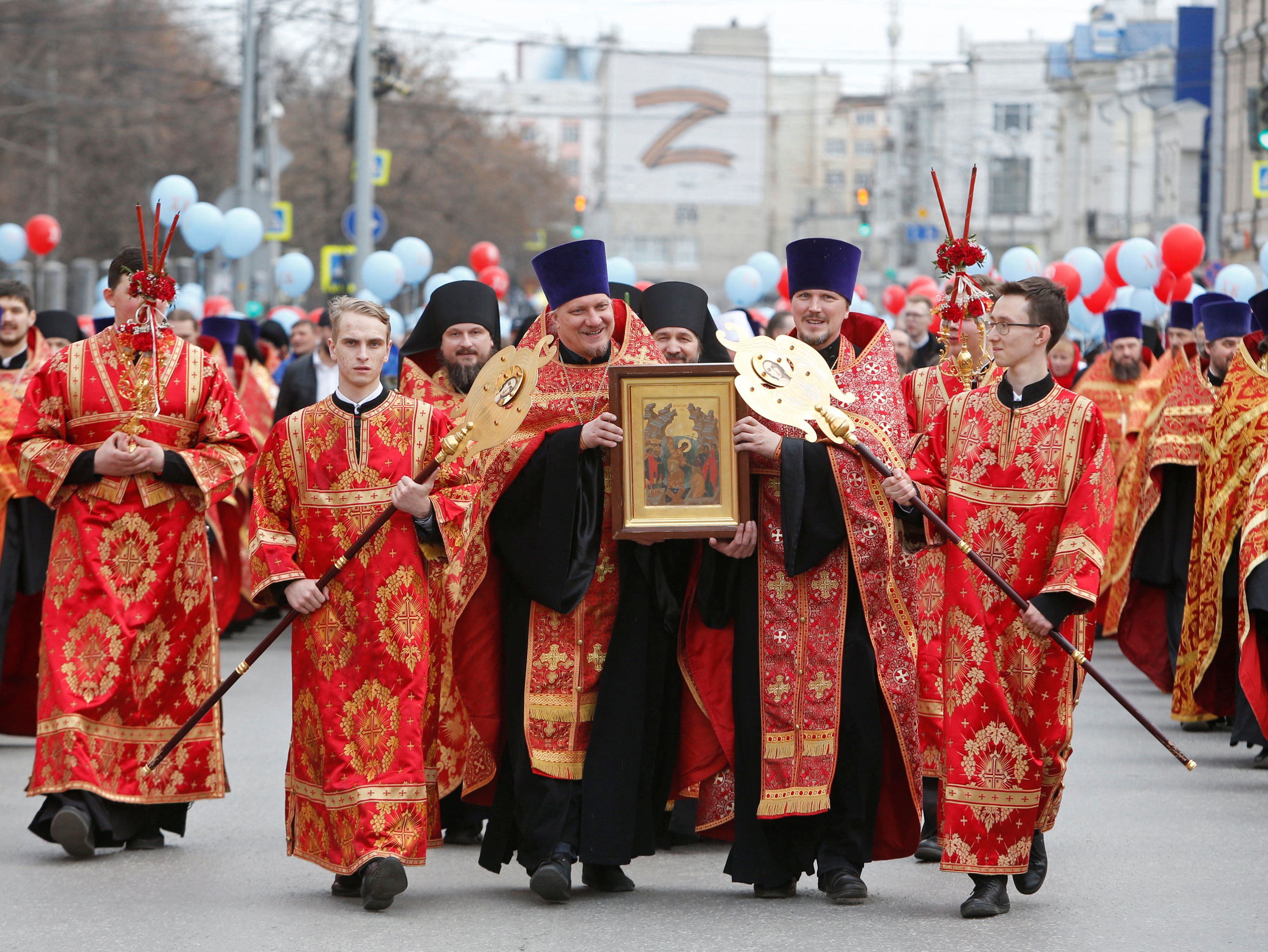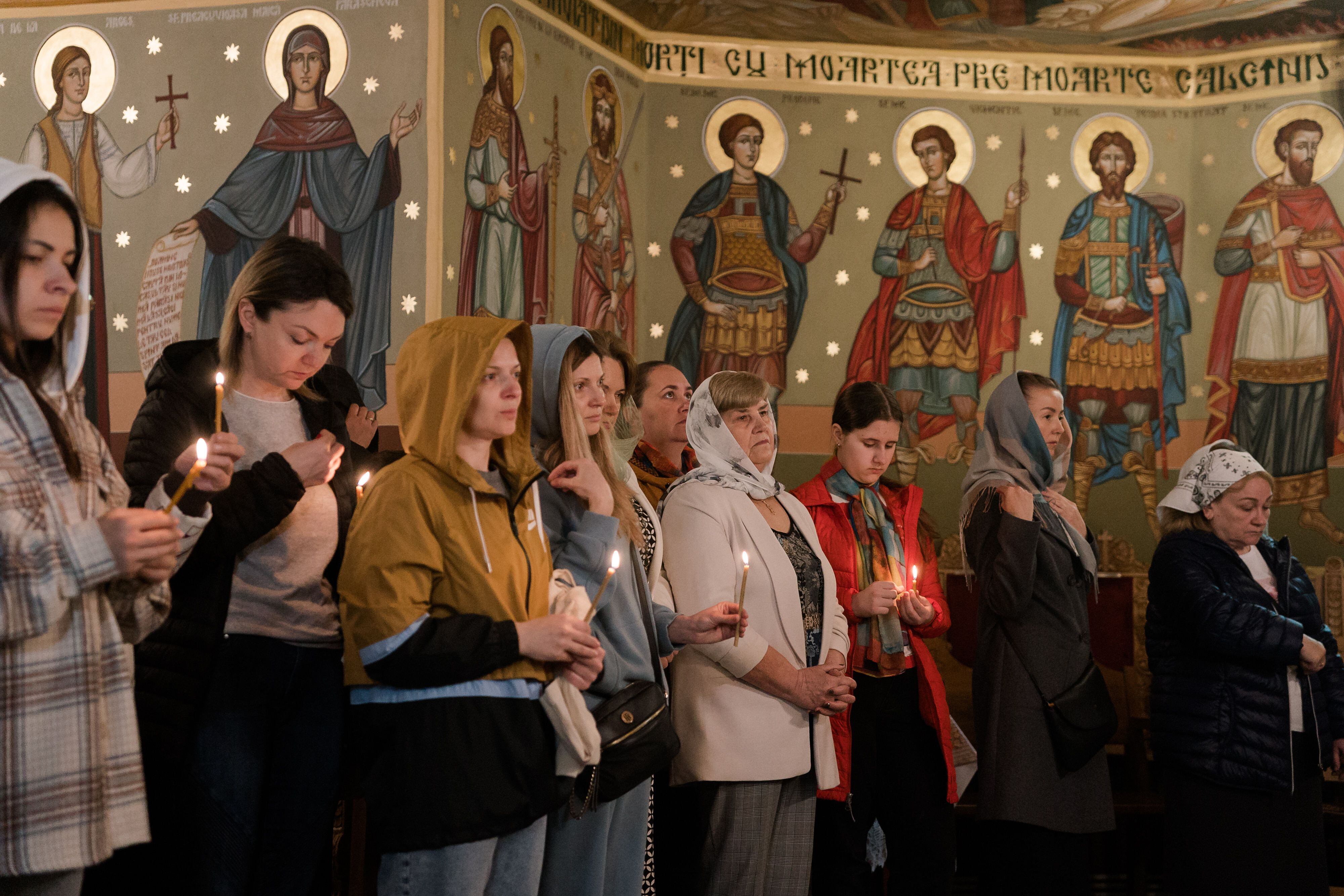“I will go where you want. Call me and I’ll go.” It was November 2014, and Pope Francis was reaching out to Kirill, the patriarch of the Orthodox Church. Russian. Eight years later, the rapprochement between the two has frozen again after the failed attempt by the head of the Catholic Church to intercede in the war in Ukraine.
Calling Kirill a “Kremlin altar boy” hasn’t helped at all, even though it’s no secret that the Russian church’s highest authority is a key ally of Vladimir Putin.
The current context is one more spat in the long history of disagreements between the Orthodox Church and the Church of Rome, a division that is more than a thousand years old.
LOOK: The Russian patriarch Kirill, a great ally of Putin, and the “butcher” of Bucha, in the proposal for sanctions by the European Union
the schism
In the year 1054, what had been brewing for several centuries occurred: the schism of the church. That year, both the Pope of Rome and the Patriarch of Constantinople excommunicated each other, precipitating the official split between the Christian churches of the West and East.
By then, five patriarchates had already been established, including the one in Rome headed by the Pope, which until before the separation was considered the most relevant.
After the division, more so-called autocephalous Eastern churches appeared, including the Russian Orthodox Church, with a patriarch as the highest authority.

Unlike the Pope, who is the highest authority in the Catholic Church, the Orthodox patriarchs are considered ‘equal’ to one another, and have autonomy; however, it is the Patriarch of Constantinople who presides over the councils and is the spokesman for all the Orthodox churches in the world.
Due to its size and number of faithful, the Russian Orthodox Church is the largest of all: it has 150 million followers, which constitutes half of all the Orthodox in the world. But this number is not comparable to the number of Catholics: some 1.34 billion, according to 2021 figures from the Fides agency, the information body for Catholic missionaries.
Doctrinal differences
Not only the leadership distinguishes Orthodox from Catholics, but also the doctrine, festivities and iconography.
Both Catholics and Orthodox believe in one God in three distinct persons: Father, Son, and Holy Spirit. However, there are differences regarding the ‘filioque’: for Catholics, the Holy Spirit proceeds from the Father and the Son; but for the Orthodox Church the Holy Spirit proceeds only from the Father.
As explained on the Euronews portal, there are also differences in the meaning of Easter, which marks the death and reincarnation of Jesus Christ. For Roman Catholics, Jesus saved man and enabled him to go to heaven by sacrificing his life on the cross. For the Orthodox, salvation is achieved by Christ’s triumph over death in the Resurrection.

The Catholic Church adopted the dogma of the Immaculate Conception of the Virgin Mary. The Orthodox glorify the holiness of the Virgin, but believe that she was born with original sin, like other people.
Around the representation of divine figures and saints, Catholicism tends to use more statues, while the Orthodox Church -especially the Russian- has a rich iconographic and pictorial tradition.
In another detail, Catholics receive in Communion the host consecrated by a priest, while Orthodox receive bits of bread and wine.
Celibacy and calendar
Another important difference is celibacy. As the BBC explains, both churches ask their clergy to take a vow of chastity, but in the case of the Orthodox it is not so strict. In the Eastern churches, married men can be priests, but they cannot marry after being ordained.
Also, Orthodox churches use the Julian calendar introduced by Julius Caesar in 47 BC, which is 13 days behind the Gregorian calendar, which was established by Pope Gregory XIII in 1582. Therefore, Orthodox and Catholic holidays are celebrated on different dates. . Thus, Orthodox Christmas is celebrated every January 7, while Easter varies in date each year.
Source: Elcomercio

:quality(75)/cloudfront-us-east-1.images.arcpublishing.com/elcomercio/Z42LV2AHFVGH3CS4V7MON4EF5I.jpg)





